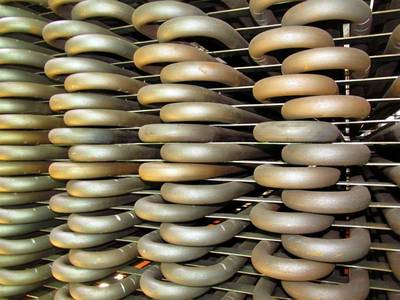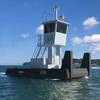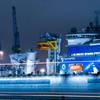WSS: Post-combustion Fuel Treatment Cuts Vessel Costs, Risk
Wilhelmsen Ships Service, a provider of products and services to the shipping industry, is advising vessel operators to wage war on soot. According to WSS, soot accumulation in a ship’s exhaust gas boiler (EGB) is a serious issue, leading to reduced EGB efficiency, significant cleaning costs, corrosion, and the risk of soot fires. However, a simple post-combustion fuel treatment can solve all these problems, at negligible cost.
Refined heavy marine fuels are full of contaminants, such as Vanadium, Sodium, Aluminium, Silica, and Potassium, which leave deposits when burnt. These particles, soot, pass through vessel exhaust valves and turbo chargers, continuing with the flue gases until they reach the EGB. Here they stick to the boiler’s heat transfer surfaces and impair its efficiency, as Jonas Östlund, WSS Product Marketing Manager, Marine Products, Oil, explains:
“Just like any heat exchanger, an obstructive deposit will reduce the transfer of heat and therefore reduce the efficiency of the equipment,” he notes. “Soot deposits are particularly effective at reducing heat transfer as they insulate extremely well. A 1mm layer of soot can reduce EGB efficiency by 10%. Left to build up to a 3mm layer, EGB efficiency can be reduced by up to 50%.
“Obviously this calls for cleaning, with typical EGBs requiring around five hours of cleaning during port calls, usually every two to three months. This means labour, equipment, and the disposal of wash water that contains acidic soot – the latter being something currently up for regulatory discussion, with an expectation that it will have to be disposed of onshore, at extra cost.
“So, the cleaning task is more than a minor hassle – it’s a major inefficiency, cost and labour burden for the engine room.”
Cleaning and EGB inefficiency are the most obvious problems, but it doesn’t stop there. Östlund states that un-burnt fuel and lubricants can also be deposited in the EGB. These lower the ignition temperature of soot, and increase the risk of soot fires.
“These can permanently damage the ECB and, although uncommon, pose a very real threat,” he says.
“In addition, cold corrosion is also a factor. Sulphur in the fuel reacts with oxygen during combustion to form Sulphur Dioxide and Sulphur Trioxide. When the temperature drops below 135°C, which occurs in EGBs operating at low velocities, the Sulphur Trioxide reacts with the moisture in the air and forms sulphuric acid. This is very corrosive to tube surfaces, and affects metal in a similar way to rust.”
The problems are myriad, but the solution is simple, according to Östlund. He stresses that post-combustion fuel treatments – such as WSS’ Unitor’s FuelPower Soot Remover Liquid Plus – provide easy relief, adding “fuel treatment shouldn’t just end in the fuel tanks.”
In the case of WSS’ proprietary Unitor offer, it is automatically dosed four times a day, dispensed as a fine mist that condensates onto the soot and continues to oxidize it. The result being that almost no soot is deposited in the EGB. The solution is active from 180°C, making it suitable for the low exhaust gas temperatures associated with slow steaming.
Unitor’s FuelPower Soot Remover Liquid Plus has been thoroughly tested over the course of the last year on board Wilh.Wilhelmsen’s 76,500 GT RoRo MV Tønsberg. Prior to its daily dosing, the vessel’s EGB required regular cleaning every two months.
However, after ten months of regular treatment, every six hours, the vessel, which has a busy trading pattern between Europe, the US and Japan, has yet to require EGB cleaning – saving time, money and a lot of work.
Stein Gravdal, Chief Engineer on the M/V Tønsberg, refers to the product as a “magic potion that works wonders”, adding that the EGB still looks almost completely clean after the extensive test period.
“And the best thing about this,” Östlund concludes, “is the cost. The outlay is negligible when measured against the very real efficiency gains the treatment delivers. It amounts to less than half a per cent of daily fuel cost.
“The ROI on this is, to say the least, compelling.”













